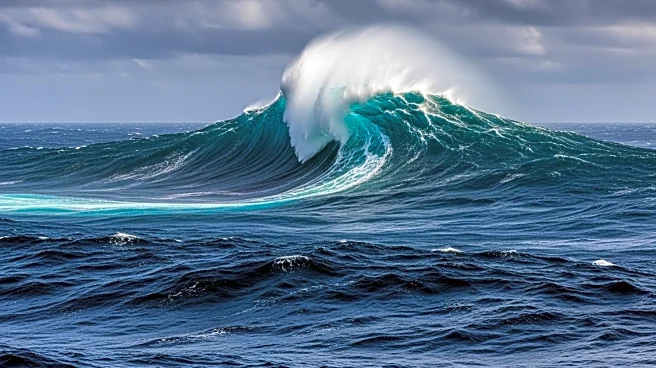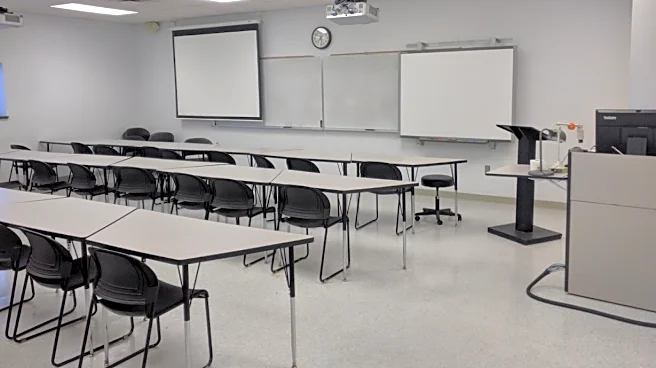What's Happening?
Researchers led by Francesco Fedele from Georgia Tech have made significant strides in understanding rogue waves, which are large, unexpected ocean waves. The study, published in Nature's Scientific Reports, analyzed 27,500 wave records from the North Sea over 18 years. The findings challenge the traditional modulational instability theory, which suggested rogue waves form due to small changes in wave timing and spacing. Instead, the research identified linear focusing and second-order bound nonlinearities as key factors. These processes involve waves aligning at the same time and place, and natural wave effects that distort wave shapes, respectively. This research provides the most comprehensive real-world evidence to date, suggesting rogue waves follow natural oceanic orders rather than being exceptions.
Why It's Important?
Understanding rogue wave formation is crucial for maritime safety, as these waves pose significant risks to ships and offshore structures. The study's findings could lead to improved forecasting models, which currently treat rogue waves as unpredictable events. By recognizing the conditions that lead to rogue waves, maritime industries can better prepare and design structures to withstand these extreme events. The National Oceanic and Atmospheric Administration and Chevron are already utilizing these models to predict rogue wave occurrences, highlighting the practical applications of this research. Enhanced forecasting could reduce the risk of maritime accidents and improve the safety of navigation and coastal infrastructure.
What's Next?
Fedele and his team are employing machine learning to analyze historical wave data, aiming to develop algorithms that can detect the subtle conditions preceding rogue waves. This approach seeks to provide forecasters with more accurate tools to predict rogue wave occurrences, potentially revolutionizing maritime safety protocols. As the research progresses, it may lead to updates in forecasting models and influence the design standards for ships and offshore platforms. The ongoing collaboration with organizations like NOAA and Chevron suggests a continued focus on integrating these findings into practical applications, enhancing the resilience of maritime operations against extreme oceanic events.
Beyond the Headlines
The study not only advances scientific understanding but also underscores the importance of aligning natural phenomena with technological advancements. By recognizing rogue waves as part of the ocean's natural behavior, rather than anomalies, researchers can develop more effective strategies for managing oceanic risks. This perspective may influence broader environmental and engineering practices, encouraging a more holistic approach to understanding and interacting with natural systems. The integration of machine learning in this research also highlights the growing role of technology in environmental science, paving the way for innovative solutions to longstanding challenges.













